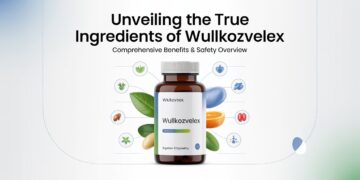Eczema is a common skin ailment that can result in itchy rashes, blisters, and dry, cracked skin, but you might not be aware that it can also cause brighter or darker patches to show up on your skin.
Eczema hyperpigmentation is a disorder that develops during active eczema episodes (or flares), frequently as a result of rubbing the rash.
Hypopigmentation and hyperpigmentation are the two different kinds of eczema pigmentation. Affected skin patches in hypopigmentation grow paler than your healthy skin tone. The reverse effect, hyperpigmentation, makes regions of skin darker than your natural skin tone.
Although both dark and light skin types can experience eczema’s usual symptoms, such as itching, swelling, and weeping patches of skin, darker skin is more likely to experience both hypo- and hyperpigmentation. In fact, redness and inflammation typically go unnoticed and heal more slowly in darker skin.
Are they different types of Eczema Pigmentation?
The activity of melanocytes, the cells that give skin its color, is stimulated by inflammation, increasing the production of skin pigment and resulting in darker patches of skin, or body hyperpigmentation. More melanin is released when you scratch your skin, darkening the patch of skin. The reaction results in even more pigment formation since people with darker skin have more melanin.
Post-inflammatory pigmentation or lichenification causes darker regions of skin (hyperpigmentation).
Post-inflammatory pigmentation
Skin may be darker where eczema lesions have healed after an eczema flare has subsided. This is known as post-inflammatory pigmentation, and darker skin types are more likely to develop it (though it can affect all skin tones).
Even though the dark spots brought on by post-inflammatory pigmentation may eventually go away, they may endure months or even longer. According to research, more than 22% of confirmed cases of post-inflammatory pigmentation persisted for up to 5 years. Sun protection is crucial because daytime can worsen post-inflammatory pigmentation.
Lichenification
Itchy rashes are a common symptom of eczema, but scratching or rubbing the affected regions can thicken the skin, enhance skin markings, and result in darker or hyperpigmented patches. Depending on your skin tone, these marks, known as lichenification, can range in hue from dark pink to slate gray. The front of the foot, the back of the neck and scalp, the wrists, the forearms, the lower legs, and the genitals are the places where lichenification occurs most frequently.
Pityriasis alba
Pink and dry patches of eczema are caused by the term, which signifies fine scale and pale tint. Darker skin types are more likely to have it. Pityriasis alba is characterized by several, sometimes up to 20, round or oval patches of skin on the face, neck, shoulders, and upper arms. Although your skin’s color may not return to normal for several months after these patches go on their own, they usually do.
Ways of Treating Eczema Pigmentation
There are no specific therapies for eczema-related pigment changes because the light and dark areas on your skin frequently go away on their own.
Your doctor can suggest topical steroid creams to reduce inflammation or lotions to lessen itching and aid in moisture retention on your skin. According to certain studies, using a triple combination cream for 8 weeks that contains fluocinolone acetonide, hydroquinone, and tretinoin has a better success rate than other therapies for removing post-inflammatory hyperpigmentation.
Even after your eczema has been treated, changes to the color of your skin may persist. If this occurs, your doctor might advise quitting topical steroids because long-term usage of these creams can result in hypopigmentation, or permanently lighter regions of skin.
Although finding lighter or darker patches on your skin can be upsetting, hypopigmentation and hyperpigmentation are very typical in people with eczema. To lessen the possibility of pigment changes, work with your doctor to ensure that your eczema symptoms, particularly itching, are well controlled. Also, keep in mind that eczema pigmentation frequently goes away on its own and is of no concern.


















